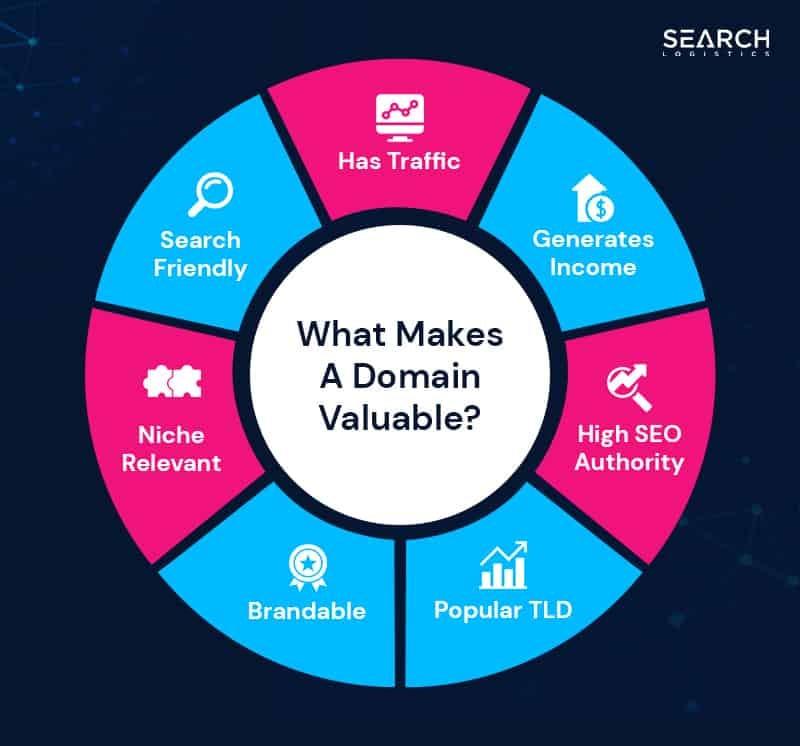Table of Contents
- Understanding the Domain Flipping Market Landscape
- Identifying Valuable Domains for Successful Flipping
- Crafting Compelling Ads That Attract Buyers
- Strategic Pricing: Setting the Right Value for Your Domains
- Effective Platforms for Listing Your Domain Ads
- Q&A
- The Way Forward
Understanding the Domain Flipping Market Landscape
In the dynamic world of domain flipping, understanding the intricacies of the market is crucial for success. This niche requires a strategic approach to identify valuable domain names that can be purchased at a low cost and then re-sold for a profit. Savvy investors pay close attention to trends, keywords, and emerging markets, as these elements can significantly affect a domain’s valuation. Moreover, the popularity of specific extensions such as .com, .io, or .net can vary, creating opportunities for discerning buyers.
One of the key factors influencing the domain flipping market is the concept of brandability. A catchy, memorable name can attract potential buyers and increase its market worth. When considering domain names, investors often evaluate:
- Length: Shorter domains generally have higher value.
- Keywords: Domains containing popular search terms can perform well.
- Extension: Certain extensions may resonate more with target audiences.
Additionally, the resale decision-making process can be enhanced by analyzing market trends and sales data. This can often be guided through platforms that provide insights into recent sales, including:
| Domain Name | Sale Price | Sale Date |
|---|---|---|
| example.com | $2,500 | 2023-01-15 |
| unique.io | $1,800 | 2023-02-10 |
| bestvalue.net | $3,000 | 2023-03-05 |
By staying informed about previous sales and current market valuations, domain flippers can make calculated decisions that optimize their buying and selling strategies.


Identifying Valuable Domains for Successful Flipping
When diving into the world of domain flipping, pinpointing domains with potential is essential for maximum profitability. One effective approach is to focus on keyword relevance. Domains that contain popular or trending keywords can attract significant traffic and interest from potential buyers. Consider domains that resonate with current events, emerging technologies, or niche markets. Additionally, analyze search volume and competition for particular keywords using tools like Google’s Keyword Planner to guide your decisions.
Another critical factor is brandability. A domain name should be easy to remember, pronounce, and spell. Avoid overly long or complex names; simplicity often resonates best with consumers. Assess whether the domain can be turned into a brand and if it fits well within a specific niche or industry. Here’s a quick checklist for evaluating brandability:
- Length: Aim for 6-14 characters.
- Extension: Prefer .com, .net, or .org; they convey credibility.
- Visual Appeal: Choose names that are visually appealing in print and online.
- Emotional Impact: Look for names that evoke a positive response.
Lastly, consider domain age and history. Older domains often carry more authority and can rank higher in search engines. Use tools like the Wayback Machine to investigate a domain’s historical use; a previously established site can come with built-in SEO advantages. A brief evaluation table can help clarify these aspects:
| Domain Name | Age (Years) | Keyword Relevance | Brand Potential |
|---|---|---|---|
| example1.com | 5 | High | Strong |
| example2.net | 3 | Medium | Moderate |
| example3.org | 7 | Low | Weak |


Crafting Compelling Ads That Attract Buyers
When it comes to domain flipping, the key to attracting potential buyers lies in your ad’s creativity and appeal. You’ll want to highlight the unique selling points of the domains you are offering, making them irresistible. Focus on attributes such as:
- Brandability: Showcase how easy it is to remember and pronounce the domain.
- Market Relevance: Connect the domain to trending industries or niches.
- SEO Potential: Emphasize keywords that enhance search visibility.
Consider using visually appealing graphics and a clean layout to make your ads stand out. High-quality images or eye-catching designs can draw attention and encourage clicks. Pair these visuals with compelling copy that evokes a sense of urgency, such as limited-time offers or exclusive deals. Including testimonials or success stories can also add credibility and enhance trust, as buyers often seek validation before making a purchase.
In addition, leverage data-backed insights to refine your ad targeting. Create a basic table comparing different domains, showcasing their potential value, current trends, and associated risks. A table like this can help potential buyers visualize their options clearly:
| Domain Name | Estimated Value | Market Trend | Purchase Risk |
|---|---|---|---|
| example1.com | $2,500 | Rising | Low |
| example2.com | $1,800 | Stable | Moderate |
| example3.com | $3,000 | Declining | High |
By providing clear and concise information through your ads, potential buyers can make informed decisions quickly. This not only enhances their experience but also significantly boosts the chances of closing a sale.


Strategic Pricing: Setting the Right Value for Your Domains
When it comes to determining the value of your domains, understanding market demand is crucial. Begin by researching similar domains that have recently sold to gauge what buyers are willing to pay. Consider aspects such as length, keyword richness, and extension (like .com, .net, etc.). These factors play a significant role in shaping the market price. Be sure to keep an eye on trends; popular keywords can significantly inflate a domain’s value. Utilizing resources like NameBio can provide valuable insights into recent sales data.
Another essential component is the perceived value of your domain. This could include factors such as brandability, memorability, and how well it aligns with potential business ventures. Domains that are short and catchy often capture higher interest. To help potential buyers visualize its value, consider creating a simple table that outlines potential uses for the domain or the advantages it offers over competitors. Here’s a quick example:
| Domain Name | Potential Use | Competitive Advantage |
|---|---|---|
| EcoFriendlyGoods.com | E-commerce for sustainable products | High market demand for eco-friendly brands |
| FitTechSolutions.com | Fitness app or consultancy | Trending topic in health and wellness |
Lastly, remember to consider your target audience when setting a price. Different groups will have different thresholds of what they consider a worthwhile investment. For instance, a startup might be willing to pay more for a domain that sets their brand apart, while a seasoned investor might look for pure resale potential. Engaging with your audience through targeted marketing can help you understand their willingness to spend and tailor your pricing strategy accordingly. Don’t hesitate to test different pricing points; sometimes, a small change can lead to significantly better offers.


Effective Platforms for Listing Your Domain Ads
When it comes to listing your domain ads effectively, choosing the right platforms can significantly impact your success in the domain flipping market. One of the most popular places is Sedo, renowned for its vast user base and integrated auction system. This platform allows you to set a fixed price or start an auction. Additionally, Sedo provides valuable analytics to track your listings’ performance, helping you make informed pricing decisions.
Another worthwhile option is Flippa, which caters not just to domains but also to websites and apps. By leveraging its large audience, you can reach potential buyers who may be interested in purchasing not just a domain, but a whole online brand. Flippa offers a user-friendly interface and the ability to showcase your domains visually, which can grab the attention of potential buyers.
Furthermore, GoDaddy Auctions offers a trusted environment for listing your domain ads. With millions of visitors daily, this platform provides excellent exposure for your domains. GoDaddy allows a straightforward bidding process, and the popularity of the brand typically translates to high visibility for your listings. Consider incorporating these platforms into your strategy to maximize your domain flipping potential.
Q&A
Q&A: Understanding Domain Flipping Ads
Q1: What is domain flipping? A1: Domain flipping is the process of buying domain names at a low price and then selling them at a higher price for profit. Essentially, it’s like real estate investing, but instead of properties, you’re dealing with digital addresses on the internet.Q2: How do domain flipping ads work? A2: Domain flipping ads are marketing efforts aimed at promoting domain names for sale. These ads can take various forms, from Google Ads to social media promotions. The goal is to attract potential buyers who may be interested in acquiring a particular domain for their brand or project.
Q3: Why should I consider using ads to flip domains? A3: Using ads can significantly increase your visibility in a competitive market. While some domains may generate interest organically, targeted advertising helps reach a larger audience faster. It can lead to quicker sales and potentially higher profits if the right buyer comes along.
Q4: What platforms are best for advertising my domains? A4: The best platforms depend on your target audience, but popular choices include Google Ads, Facebook, Twitter, and specialized domain marketplaces like Sedo or Flippa. Each platform offers unique targeting options, allowing you to reach potential buyers based on their specific interests.
Q5: Are there specific keywords I should use in my domain flipping ads? A5: Yes! Keywords play a crucial role in how your ads perform. Focus on terms that potential buyers might search for, such as “premium domain for sale,” “buy domain,” or “invest in domains.” Additionally, including niche keywords related to the domain’s industry can help attract a more relevant audience.
Q6: What are common pitfalls in domain flipping that ads can’t fix? A6: While ads can greatly enhance your reach, they won’t compensate for poor domain choices. Buying domains without market research, overpricing them, or neglecting to build a compelling sales pitch can hinder your success. It’s essential to ensure that your domains are attractive and positioned correctly in the market.
Q7: How can I measure the success of my domain flipping ads? A7: You can measure the success of your ads by tracking metrics such as click-through rates (CTR), conversion rates, and overall sales volume. Utilizing analytics tools allows you to assess which ad campaigns are driving interest and generating sales, helping you refine your strategies over time.
Q8: Is it worth investing in paid ads for domain flipping? A8: Investing in paid ads can be beneficial, especially if you have quality domains that you believe will attract buyers. Consider your budget, the competitiveness of your domain niche, and your goals. Targeted advertising can yield significant returns if executed properly, making it a viable option in the domain flipping landscape.
Q9: Can I advertise domains I register for free? A9: Advertising free domains is possible, but keep in mind that quality often outweighs quantity. Even if you have free domains, their marketability may be limited if they are not memorable or relevant. However, if they hold potential value, don’t hesitate to market them through ads.
Q10: What tips do you have for crafting effective domain flipping ads? A10: To create effective ads, highlight the uniqueness of your domain, include a strong call-to-action, and use engaging visuals. Keep your ad copy concise and focused, and always target your audience correctly. Testing different ad formats and messages can also help you determine what resonates best with potential buyers. — By understanding these aspects of domain flipping ads, you can develop a strategic approach that can enhance your domain flipping business and lead to successful sales.

